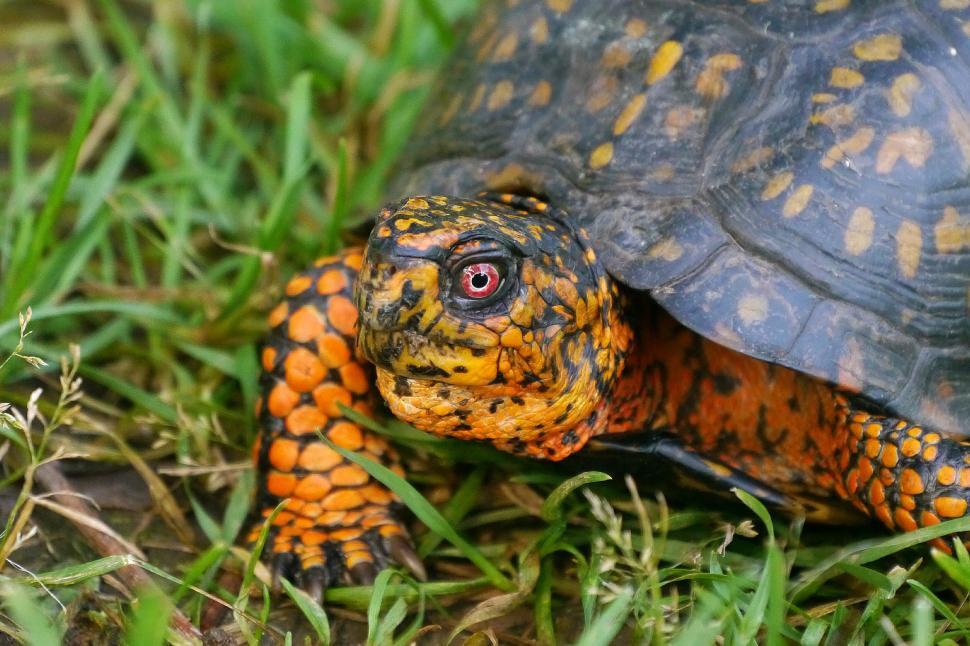ANIMAL: Eastern Box Turtle Terrapene carolina Type of Animal: Turtle Habitat: Fields & edges, grasslands, forests, lake margins, pastures, shallow streams & nearby areas, ponds, puddles, forest edges, meadows & edges, wetland edges, thickets, woodlands, gardens, swampland, gardens, creek sides Location(s): Found in E half of US in extreme S Maine, SE New Hampshire, S New England, SE New York as well as extreme SW area bordering extreme NW Pennsylvania, most of Pennsylvania, Mid-Atlantic states, SE US to CN Florida, Ohio, Indiana, S Illinois, & W & S Michigan Appearance: High domed upper shell (carapace), hinged bottom shell (plastron), carapace usually brownish or black w/ yellowish/orangish radiating pattern of lines/spots/blotches, skin usually brown or black w/ some yellow, orange, red, or white spots/streaks, males in some populations have blue patches on cheeks/throat/front legs, males usually have red irises while females have brown irises, sharp horned beak, stout limbs, feet webbed only at base Food/Diet: Slugs, snails, worms (especially earthworms), berries, mushrooms, grasshoppers, crickets, carrion, grasses, fruit, caterpillars, grubs, beetles, flowers, eggs, baby mice, fish, vegetables, greens, leaves, legumes, spiders, flies, crayfish, sow bugs, centipedes, pill bugs, moss, stones, sand, millipedes, melons, root vegetables, insect larvae, stink bugs, bread, duckweed, roots, cactus pads, grains, amphibians, small snakes, small birds, young box turtles Status in Wild: Threatened Conservation: Breeding from zoos, aquariums, & breeders Lifestyle: Solitary or small groups of a male w/ 2-6 females, sometimes groups w/ 3-4 males & up to 15 females seen. Additional Info: Called: Male Female Young-Hatchling Group-Bale Weight: Male-1 lb Female-2 lbs Gestation: 3 months Life Span: 50-100 years Body Length: Male-6 in Female-5.9 in Tail Length: Male-2 in Female-1 in Main predators of adults are bobcats, bears, alligators, snapping turtles, foxes, coyotes, raptors, snakes, raccoons, dogs, skunks, pigs, otters, cats, mink, fire ants, corvids, rats, badgers, opossums, weasels, & bullfrogs. Young preyed on by many birds, adult box turtles, rodents, armadillos, & shrews. Threatened due to pet trade, vehicle collisions, & habitat destruction/alteration. In N areas, they go into hibernation in October or November & usually emerge in April. State reptile of North Carolina & Tennessee. Fun Fact(s): Many American Indian cultures ate meat, used shells for ceremonial rattles, & buried them w/ dead. Can retract almost completely inside their shell. Shells can completely regenerate. Dangerous for humans & perhaps other animals to eat due to possibility of poisonous mushrooms & toxins lingering in flesh.

